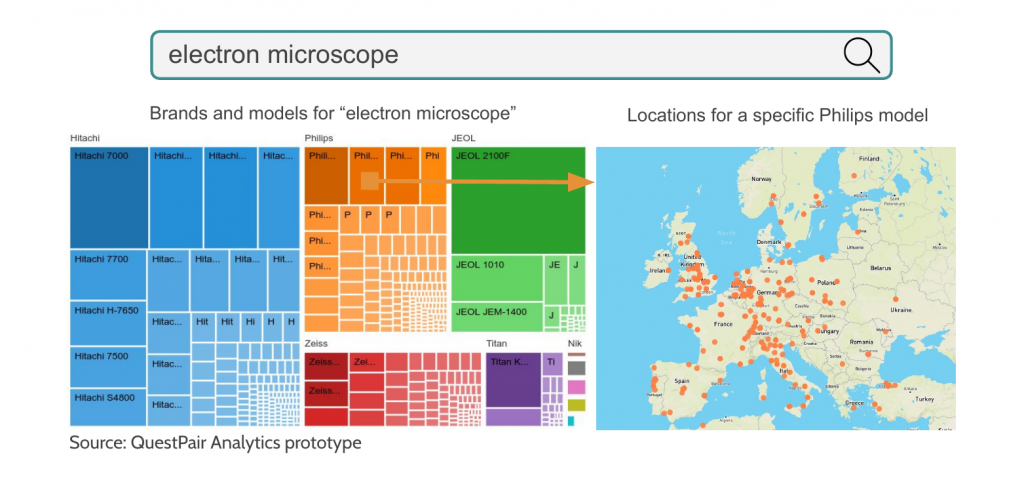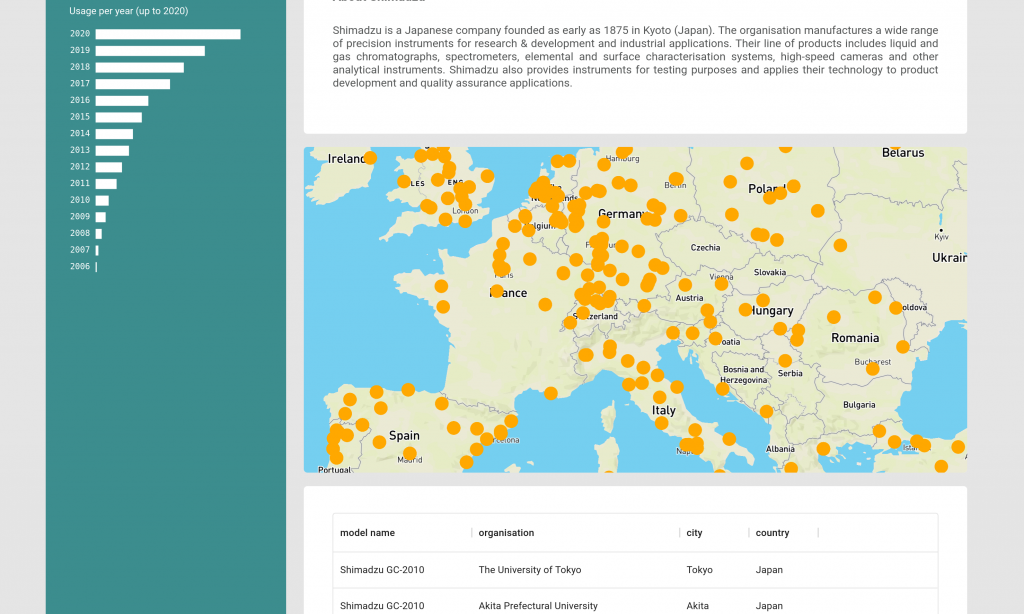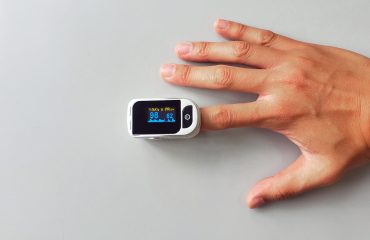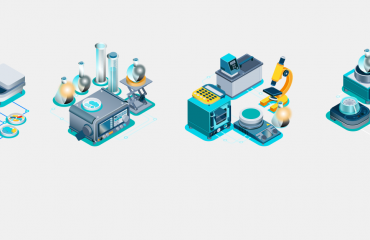During the last year or so we have set out to inventorise the usage of research equipment that is used in laboratories around the world. To do this, we have developed analytics algorithms that track different brands and models of laboratory instruments that are used at research organisations and companies around the world.
We have gathered a wealth of data that we are now using to develop new products and services for the scientific community. Our goal is to make it easier for professionals to find suitable research equipment by providing relevant data and insights. At the same time we aim to offer suppliers the opportunity to advertise their products to their target audience in an affordable way through our smart marketplace.

Research equipment pages
To reach this goal, we have started releasing equipment pages that summarise usage statistics for specific brands and models. Even though there is still much work to do to improve and extent the scope of scientific equipment that is inventorised, we are increasingly confident in our data collection methods and will provide and display more detailed information in time.

Our analytics at this moment is already able to identify thousands of models for a large variety of commonly used types of research equipment such as microscopes, gas chromatographs, spectrometers, and medical devices such as blood analysers and bone densitometers.
For each page of a specific model, we track its usage in time and also list the organisations that were found to be using the equipment recently. We also mention the research fields in which the instrument is is applied and cite articles in which it is mentioned to provide context on possible research applications. This can be useful to quickly explore the scope and applications of the model and at the same time also provides researchers with different use cases that may otherwise go unnoticed. Finally, there is a section in which suppliers are mentioned for relevant research equipment on the QuestPair marketplace. In this way, we are offering a unique and direct route for manufacturers and suppliers to showcase their equipment to interested users on pages that are relevant for the equipment.

Circularity
Besides making it easier for researchers and companies to explore research equipment, we also believe that our analytics can contribute to a more circular usage of scientific instruments and boost resales of used equipment. Our equipment model pages can help to locate specific analytical research devices and medical instruments that are used nearby or are available for sale or rent through intermediaries and resellers. To further boost our analytics we are especially open to partnerships and projects with resellers and organisations using sustainable business models.
Future plans
In the coming period, we will be launching more research equipment analytics pages, extending the the 20 pages launched so far to hundreds of pages in the future. We will give preference to scientific equipment and instruments that are already mention on our marketplace. It deserves mention that we are particularly keen to attract manufacturers selling and promoting innovative new equipment that can drive state-of-the-art research and innovation. Finally, we are also exploring how our information can be beneficial to other platforms and marketplaces and enrich their data and user experience.





